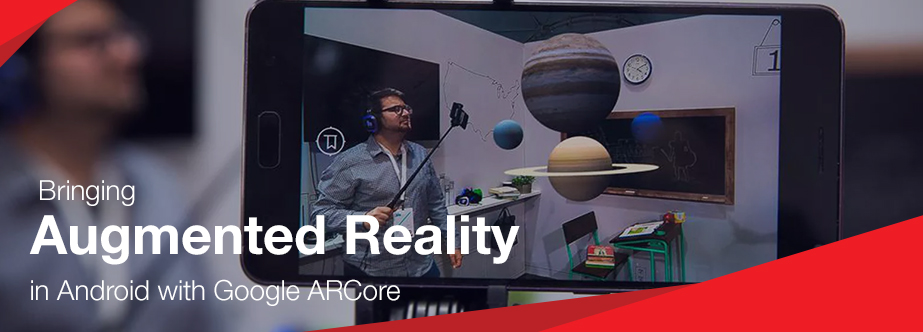Bringing Augmented Reality in Android with Google ARCore
Android is the largest mobile platform with the record that exceeds more than 2 billion active users across the globe. Right from the year of launch, the tech experts of Google have been upgrading the Android platform with a rich set of frameworks, tools, and APIs to serve its users in every way possible.
Among all the features, Augmented Reality is one thing that has attracted users more than anything else. It has transformed the way humans interact with the digital world that is close enough to the real-life. In this blog, we will be discussing the latest Augmented Reality software development kit called ARCore that has been just unveiled by the Google team.
Things to know about Google ARCore
Though Project Tango (now known as Tango) was developed by Google a few years back for implementing Augmented Reality in phones, it could not be much successful due to its specific requirements for cameras that needed specialized hardware. For its reliability on custom sensors, only some devices supported Tango till date. Now, Google is all set to deploy Augmented Reality capabilities to a wider extent of Android users with the new ARCore SDK. With the help of this kit, AR can be incorporated into existing Android devices without the need of using phones with limited hardware specs. Reportedly, during the launch of this kit, there are just two devices that support ARCore: Google Pixel and Galaxy S8 running 7.0 Nougat and above.
What is ARCore capable of?
The main motive behind the development of ARCore is to push AR into mobile phones without any additional hardware. It is expected to run on 100 million of devices across the Android ecosystem in coming years as Android works with top manufacturers like Samsung, LG, Huawei, ASUS & others to deliver the best AR Experience without compromising on quality & performance.
This development kit also works with Unity, OpenGL, and Unreal. Here are main attractive features that are supported by ARCore:
- Motion Tracking
With the help of sensor data from IMU (Inertial Measurement Unit) and phone’s camera, ARCore will be able to determine both the orientation as well as the position of the phone as it moves. Instead of rotating and moving with the phone, virtual objects will stay accurately at the locations where they were placed.
- Light Estimation
Observing the ambient light in the environment, ARCore help the developers to light virtual objects in such a way that it matches their surroundings, making the appearance of the objects look even more realistic.
- Environmental Understanding
Though it’s common for any AR objects to be placed on a table or a floor, ARCore will also enable detection of horizontal surfaces with the help of the same feature points that was used for motion tracking.
[Read more- Top 10 Augmented Reality App Development Companies in US]
Well, let’s wait and watch whether ARCore will push AR to a wider audience leading to increased developer uptake or not. Going through the products or games that have been built with the association of AR and VR till now, it could not gain much popularity as they had some issues or another. Pokemon Go was undoubtedly one of the favorite games that made users aware of AR than any other games designed earlier but the battery constraints of smartphones made it into a significant power drain. We believe that with the launch of this new AR development kit i.e. ARCore, developers will be able to resolve issues like this in days to come.
